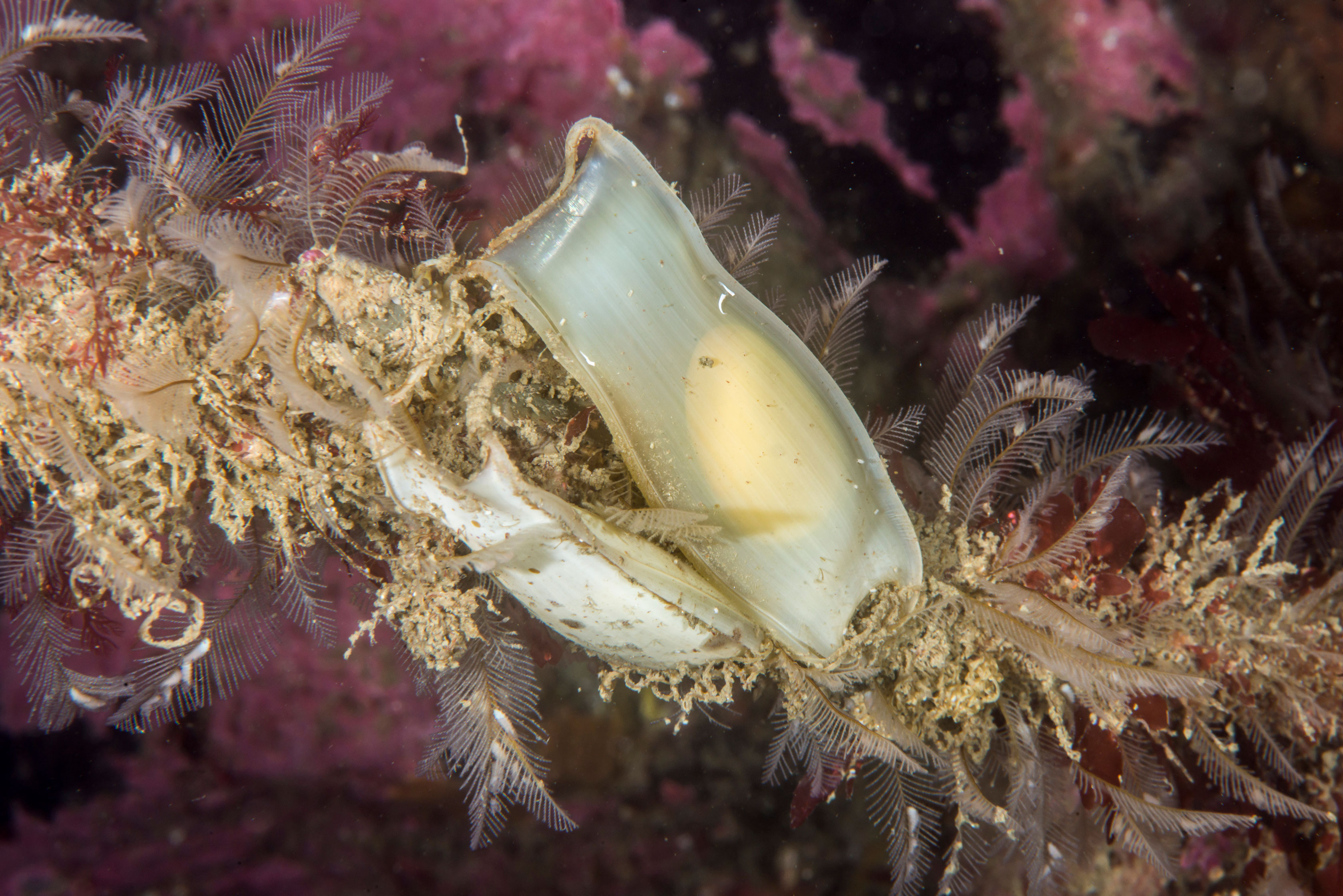Topic: Small-spotted catshark

The small-spotted catshark is a relatively small shark with a characteristic pale golden-brown skin covered in dark spots.
Photo: Erling Svensen / Institute of Marine Research
The small-spotted catshark primarily occurs on sand and gravel bottoms in shallow waters between 0-100 m deep.
Photo: Erling Svensen / Institute of Marine ResearchPublished: 30.09.2024
Characteristic features
Catsharks are currently represented by two families, known as ‘catsharks’ (family Scyliorhinidae) and ‘deepwater catsharks’ (family Pentanchidae). In some classifications these two families are grouped together into the one Scyliorhinidae Family. Scyliorhinidae is the smaller of the two families, with approximately 40 known species that are distributed in tropical and temperate waters around the world. Two of these catsharks occur in Norwegian waters: the small-spotted catshark (Scyliorhinus canicula, also known as the lesser-spotted dogfish) and the nursehound (Scyliorhinus stellaris, also known as the greater-spotted dogfish).
Both catsharks are relatively small sharks with a characteristic pale golden-brown skin covered in dark spots, and have a small mouth. The main way to differentiate the species is implied in their name: the small-spotted catshark has smaller spots, and these tend to be more numerous. The small-spotted catshark is also the smaller of the two, with a maximum length of 1 m, whereas the nursehound can reach 1.5 m.
Both catsharks are widely distributed along the continental shelves of the Northeast Atlantic, from Western Africa to Norway, and in the Mediterranean. The small-spotted catshark is the more abundant of the two in Norwegian waters and is most often encountered in the North Sea and the Skagerrak. The nursehound, on the other hand, is only occasionally encountered in southern Norwegian waters.

Biology
The small-spotted catshark primarily occurs on sand, gravel, and muddy bottoms in shallow waters between 0-100 m deep, but can also be found deeper towards 400 m. It is nocturnal, hunting primarily at night whereas it is often seen resting on the sea floor during the day. This little shark feeds on a wide range of benthic organisms such as molluscs and crustaceans, but it also hunts cephalopods and small fish.
Cartilaginous fishes have diverse reproductive strategies, but all species reproduce through internal fertilization. While many sharks give birth to live young (ovoviviparity), others, such as the small-spotted catshark, lay egg cases known as mermaid’s purses (oviparity). Different species lay characteristic mermaid’s purses whose features can allow species identification. Small-spotted catshark mermaid’s purses are roughly 5–6 cm long and have long, curly tendrils at each of four corners. These tendrils allow the egg case to attach itself to structures like seaweed or corals. This catshark is believed to lay its eggs between January and June, and the roughly 50 cm long pups hatch after a 5–11 month incubation period.

Fishery and management
The small-spotted catshark is relatively productive and abundant compared to other cartilaginous fishes, and is listed as Least Concern on international and Norwegian red-lists. It is of low commercial value in Europe, but is often caught as bycatch in several fisheries. The ICES advisory body defines four stocks of small-spotted catshark. One of these is the North Sea ecoregion, which includes southern and western Norwegian waters. Most catches of small-spotted catshark are discarded, but in southern Europe a small amount is sometimes landed to be consumed or used as bait in other fisheries. Discard rates are difficult to estimate, but studies indicate that post-discard survival is relatively high in some fisheries.
Advice (landings, North Sea ecoregion)
Advised landings 2024: 2680 tonnes
Advised landings 2025: 2680 tonnes
